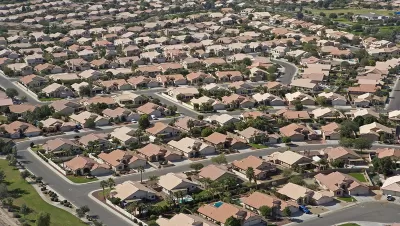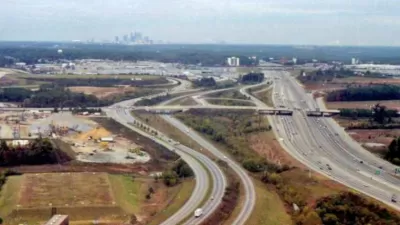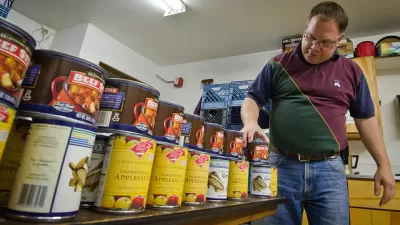Author Scott Allard debunks lingering myths about how people experience poverty in cities. Poverty's suburbanization, he argues, has more to do with the loss of jobs than migration from "inner cities."

Nowadays, poverty's suburban face challenges old notions of "inner cities" as repositories for the less fortunate. According to one narrative, Tanvi Misra writes, "As cities become more expensive, immigrants and communities of color have made a home for themselves outside the urban core—only to come face-to-face with the same issues they left behind."
In an interview, Scott Allard, author of Places in Need, complicates that picture. One of his findings: "When you break out the suburban regions, there are more poor people in the newer suburbs combined than in the older suburbs." At the same time, race doesn't define suburban poverty. "What you see is fairly consistent increases in poverty across race and ethnic groups in the suburbs. The increases among whites are large and substantial, as are increases among blacks and Hispanics."
While plenty of people are moving outward to escape newly expensive "inner cities," migration isn't suburban poverty's biggest driving force. According to Allard, "the most important factor is change in the labor market—the decline of the number of good-paying low-skilled jobs."
FULL STORY: Confronting the Myths of Suburban Poverty

Alabama: Trump Terminates Settlements for Black Communities Harmed By Raw Sewage
Trump deemed the landmark civil rights agreement “illegal DEI and environmental justice policy.”

Study: Maui’s Plan to Convert Vacation Rentals to Long-Term Housing Could Cause Nearly $1 Billion Economic Loss
The plan would reduce visitor accommodation by 25% resulting in 1,900 jobs lost.

Planetizen Federal Action Tracker
A weekly monitor of how Trump’s orders and actions are impacting planners and planning in America.

Federal Homelessness Agency Places Entire Staff on Leave
The U.S. Interagency Council on Homelessness is the only federal agency dedicated to preventing and ending homelessness.

Restoring Northern India’s Himalayan ‘Water Temples’
Thousands of centuries-old buildings protect the region’s natural springs and serve as community wells and gathering places.

Milwaukee to Double Bike Share Stations
Bublr Bikes, one of the nation’s most successful, will add 500 new e-bikes to its system.
Urban Design for Planners 1: Software Tools
This six-course series explores essential urban design concepts using open source software and equips planners with the tools they need to participate fully in the urban design process.
Planning for Universal Design
Learn the tools for implementing Universal Design in planning regulations.
Caltrans
Smith Gee Studio
Institute for Housing and Urban Development Studies (IHS)
City of Grandview
Harvard GSD Executive Education
Toledo-Lucas County Plan Commissions
Salt Lake City
NYU Wagner Graduate School of Public Service





























